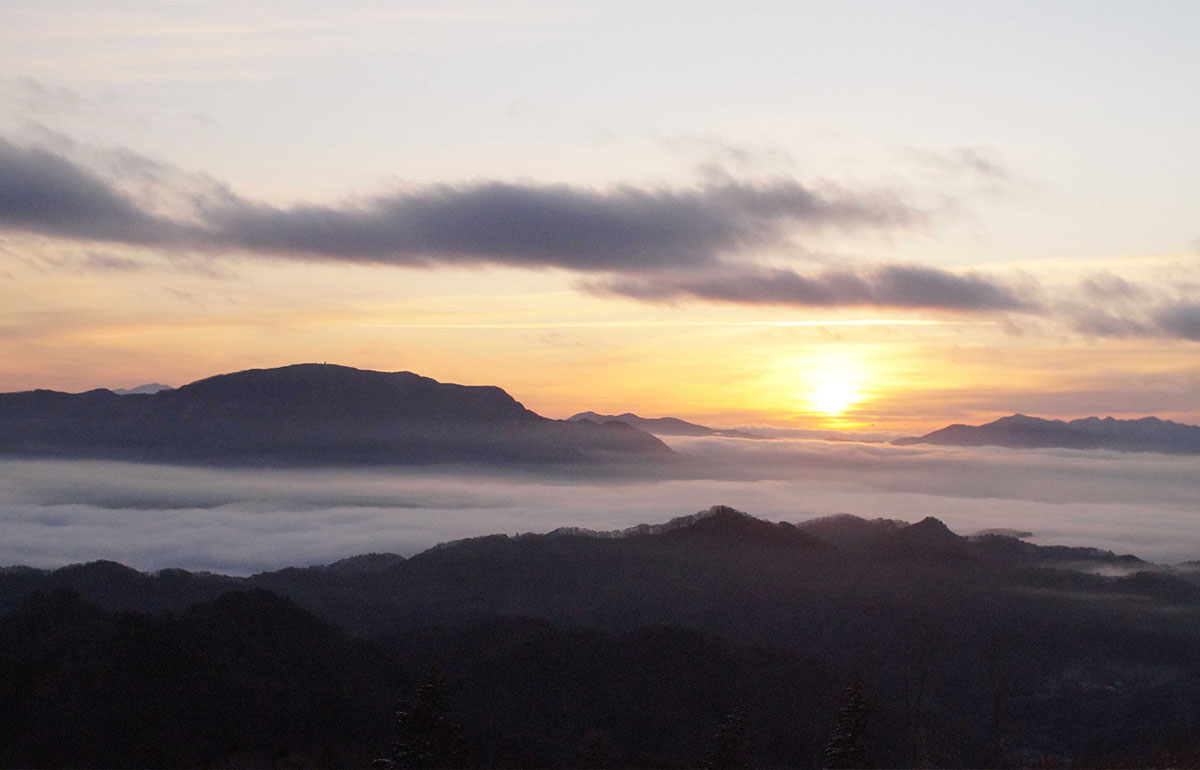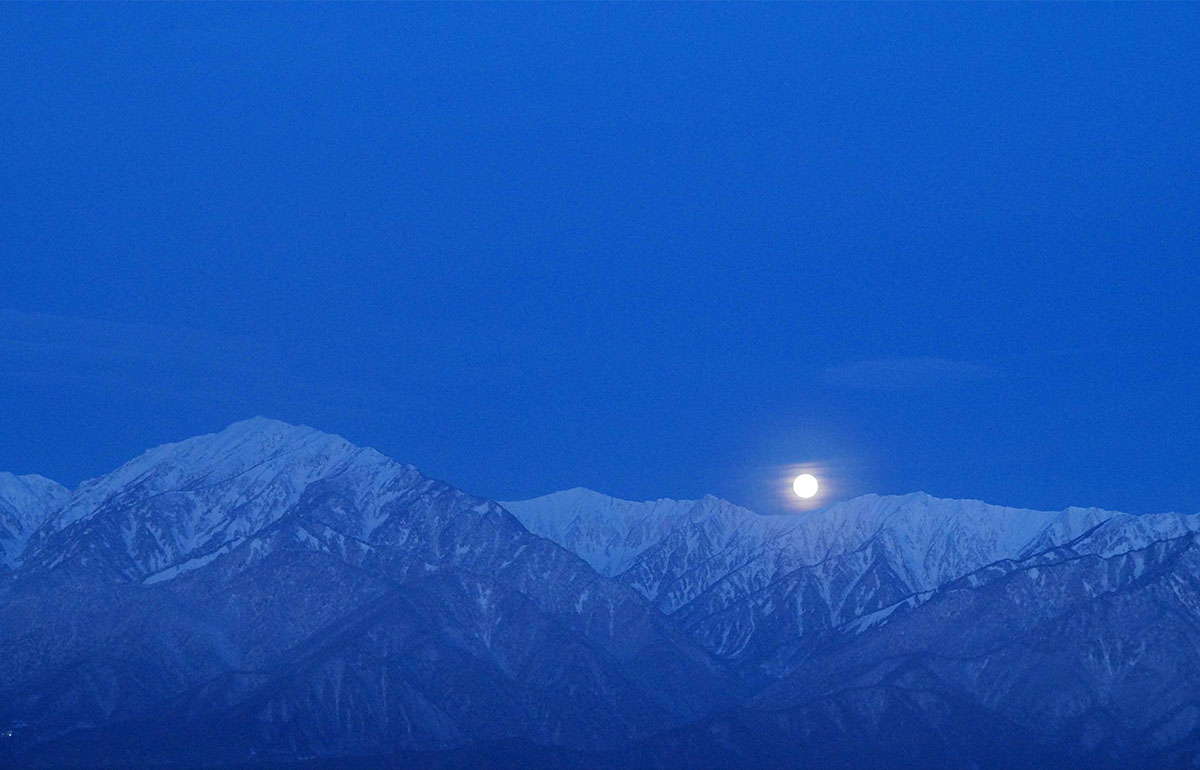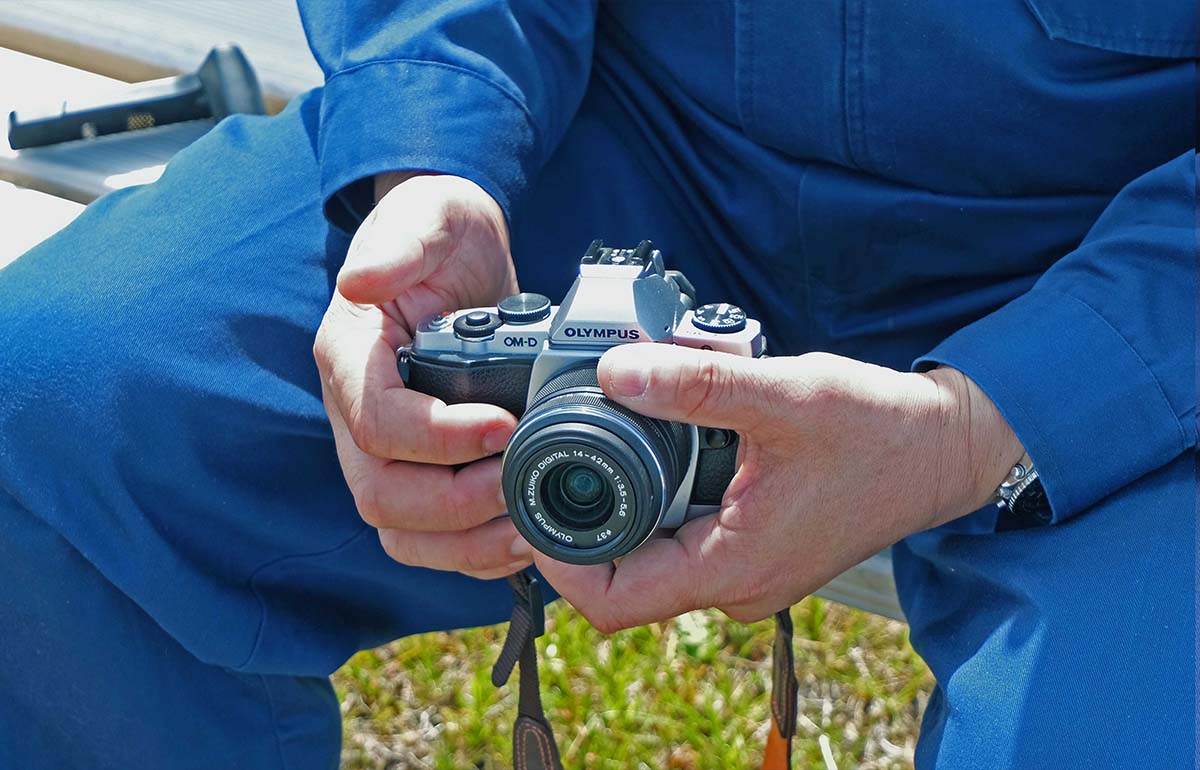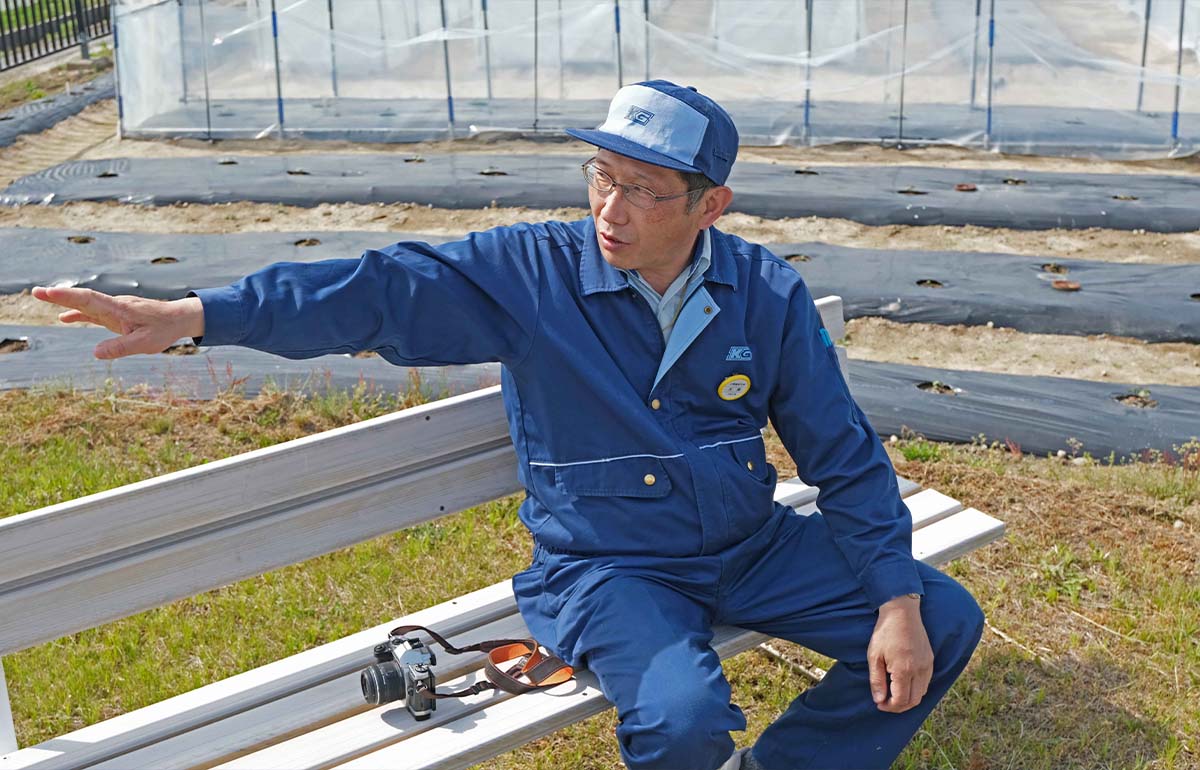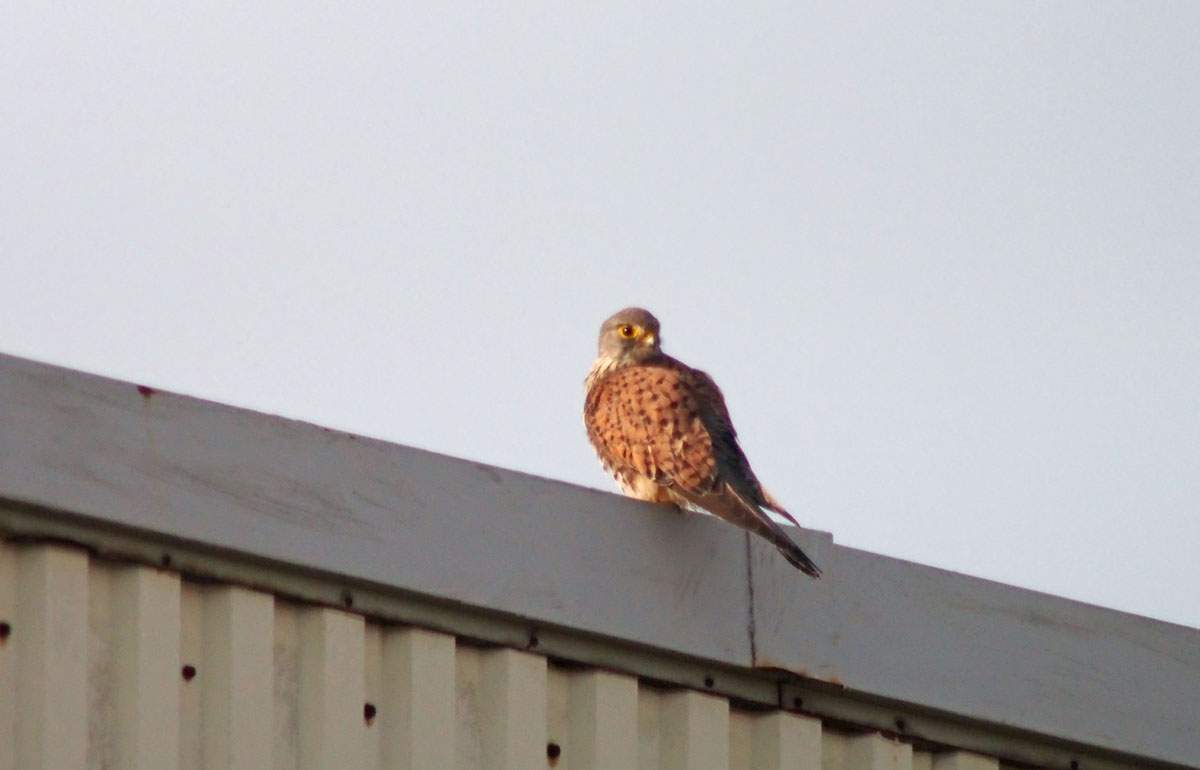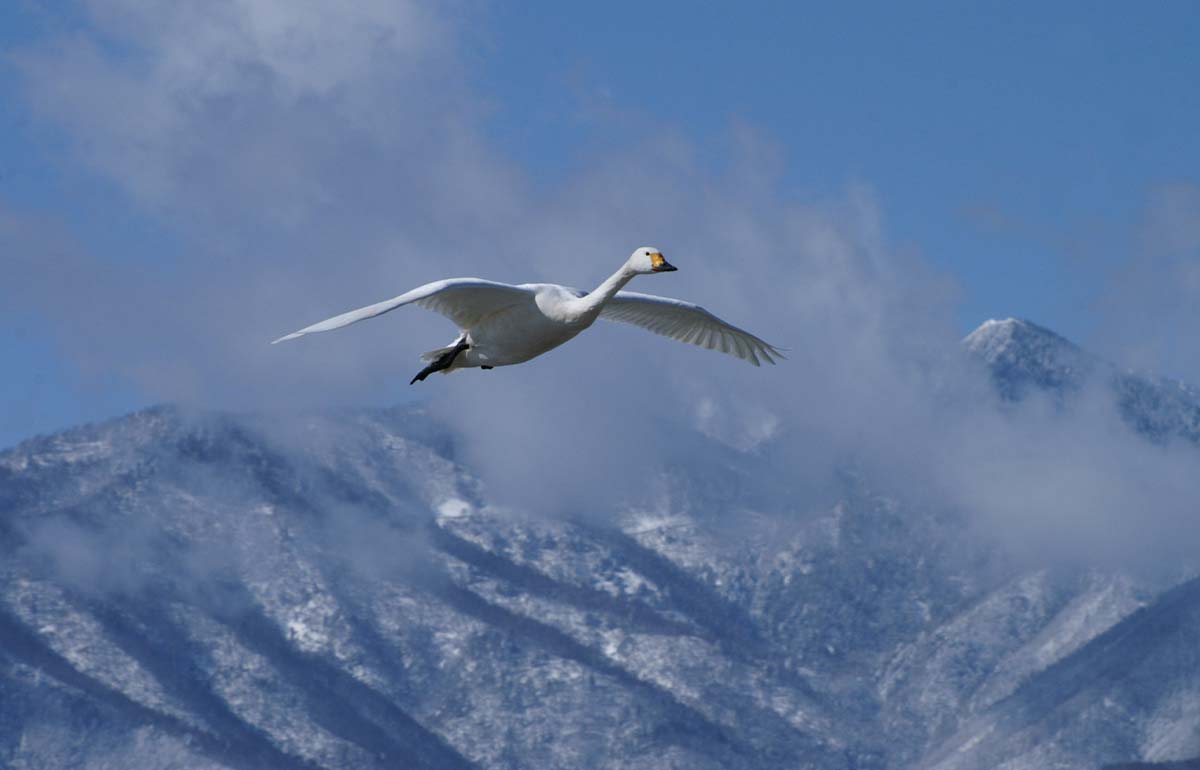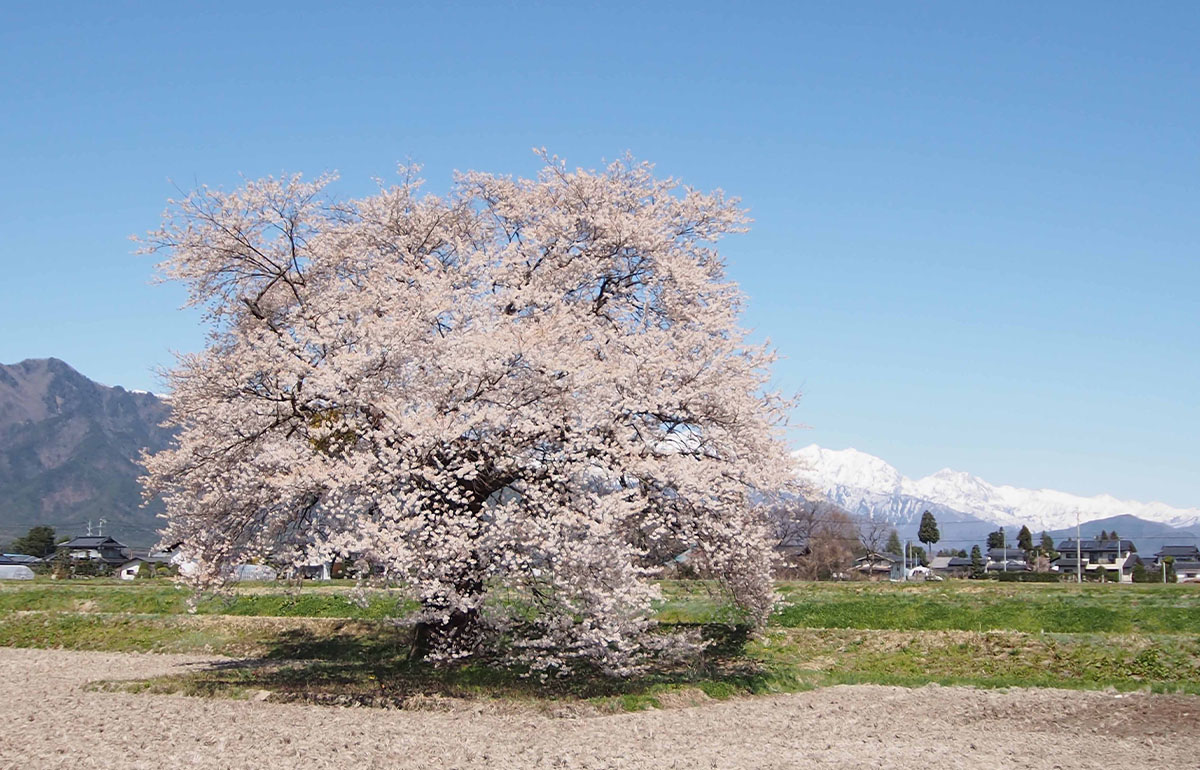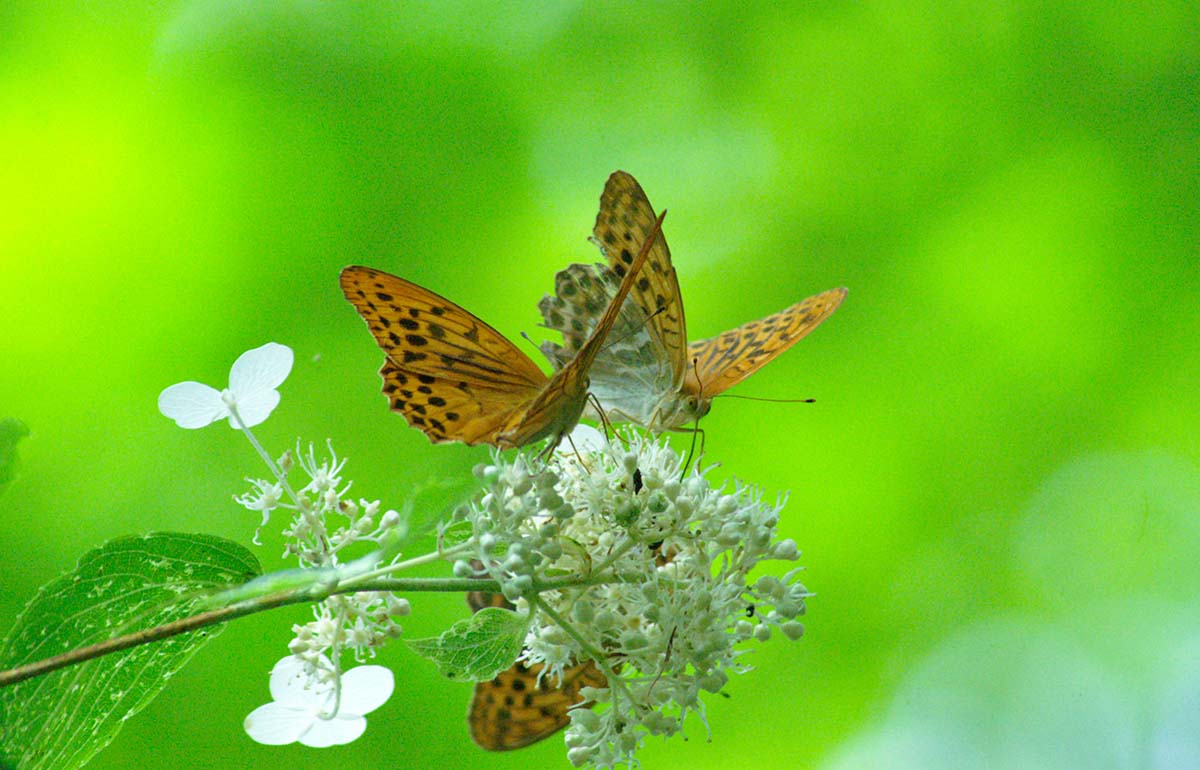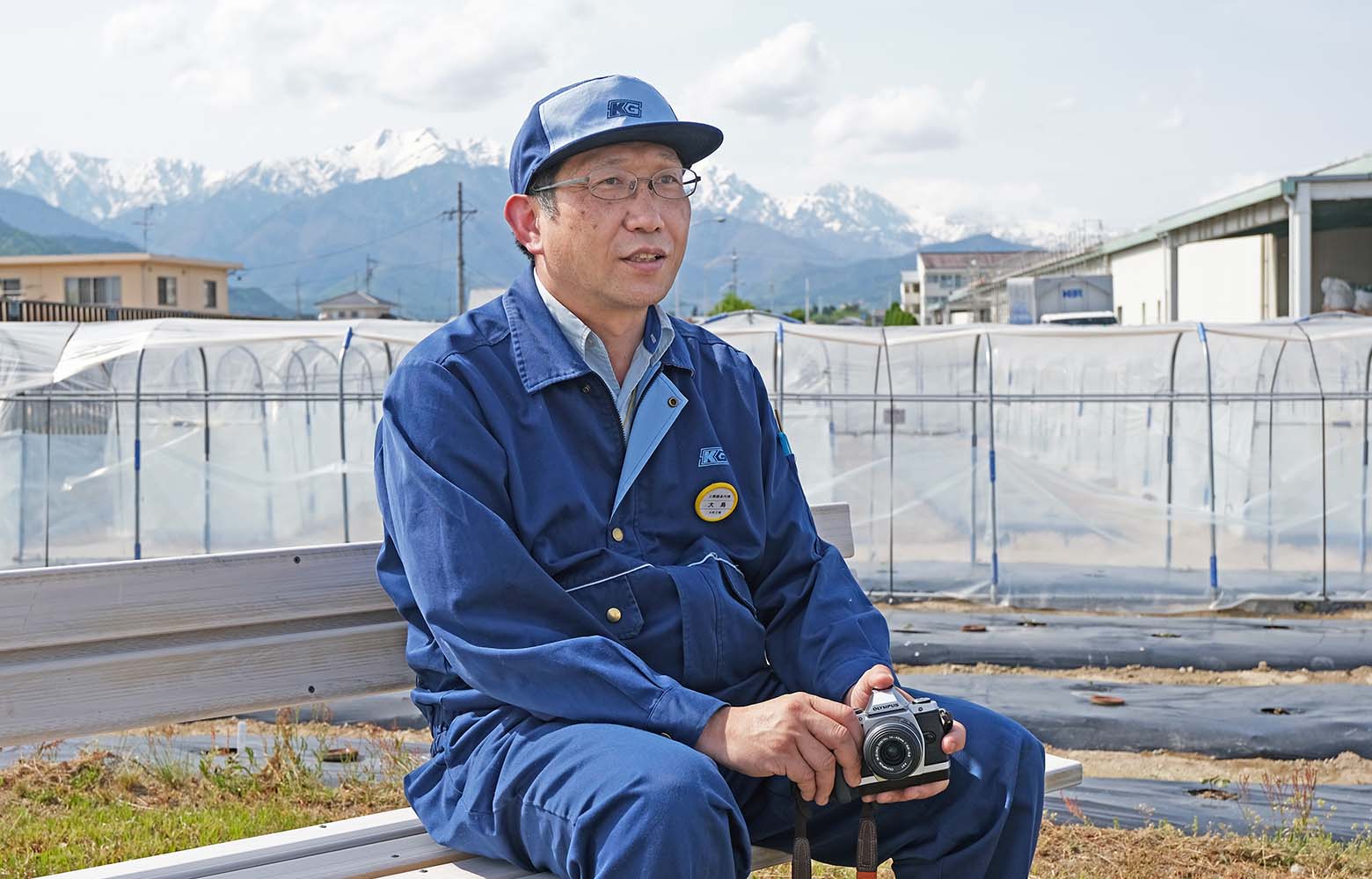
Interview
The magnificent natural beauty of Shinshu, its flora and fauna,
and the lives of its people. How to enjoy Omachi City through the lens of…
A photograph of the majestic Northern Alps mountain range illuminated by the morning glow. The photo was taken by Mr. Akira Oshima, who is the head of the Engineering Section at Kondo Bosho's Omachi factory. We interviewed Mr. Oshima, who knows the charms of Omachi City, Nagano Prefecture, where renment thread is spun, better than anyone else through his hobby of photography.

Morning glow of the Northern Alps
—— Thank you very much for allowing us to use the photos of the Northern Alps taken by Mr. Oshima on the renment web site. I was impressed by the fantastic photos because I had a strong image of the Northern Alps as white snow-capped mountains. Do the colors of the mountains change with the seasons like that?
The color of the mountains changes not only with the season, but also with the way they burn each day. The color and expression changes every day, from a reddish hue that makes you think they have been tinted, to a gray with a hint of pink. I enjoy the differences in color when I take pictures.
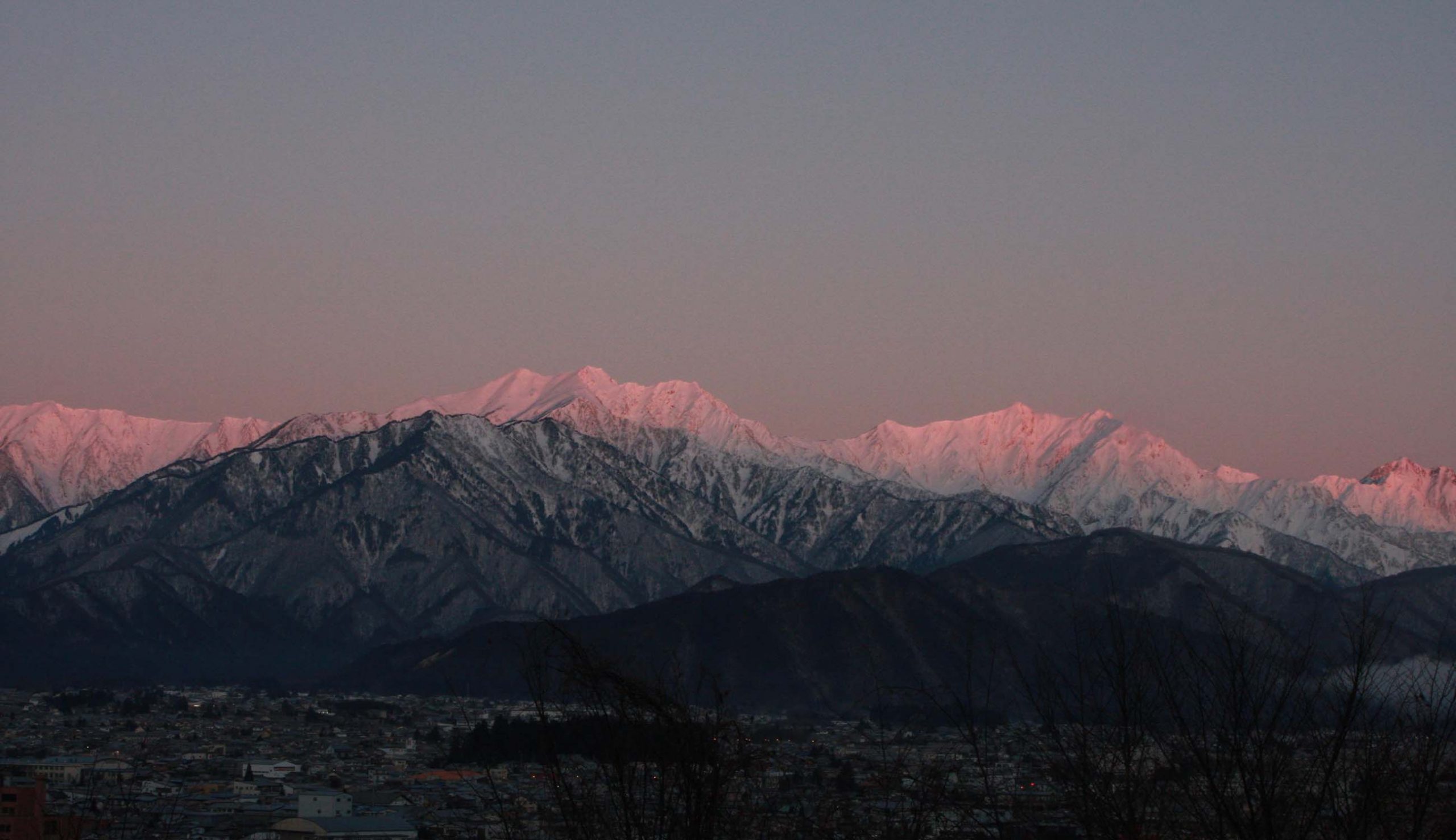
—— The sunrise photo we used this time is also a photo that only a local could take.
That picture was taken on my way to work when I stopped my car and put together a little telephoto camera. I always leave my camera in the car. I go to work early, so when I see a beautiful sunrise or sunset on the way to the factory, I want to take pictures of the scenery. I used to work in Azumino, and there are many beautiful mountainous formations there as well, such as Mt. The view from the Omachi factory is very different. You can see everything from Mt. Renge to the Hakuba Sanzan mountains all at once, and the morning glow is breathtaking. The air is very clean, and especially in winter, on nights with a full moon, the snowy landscape of the mountains sometimes makes them appear more prominent.
—— It looks amazing just by imagination. I would love to see it.
When I wanted to take a picture of it...I would drive up to the Takagariyama observatory in the middle of the night, and when I reached the point where I could not drive up, I would stop the car, change into snowshoes, and start climbing at around 2 am. It was extremely cold up there, so I would warm myself with a stove, wait until the moon was in a good position, take some pictures, and wait for the sun to rise in the morning. I would wait until the sun rose in the morning. I would climb completely equipped for winter, but when I got to the other side, I would put on another jacket...and just like that, I would take pictures and play with them.
—— This is a unique way of photographing the land.
There are a lot of people who come to take pictures even if they don't live there. On weekends, there is a lot of competition for places, and even in March, there are people already there. It is not often that I go there and nobody is there.
—— How did you get started with cameras?
I have always been an obsessive collector, and had a habit of collecting things. I couldn't collect real birds or insects, so I would take pictures of them. I bought my first camera with my own allowance when I was in the second grade of junior high school. Until then, I had borrowed my parents' SLR camera, but I wanted my own camera, so I chose an Olympus, which was relatively inexpensive but had many features, because Canon and Nikon at that time were expensive. I still use the camera I bought then. At first, I wanted to take pictures of airplanes, so I bought a camera that would allow me to take pictures with an SLR telephoto lens. Later, Olympus cameras were also good at macro photography, so I started taking a lot of pictures of insects and wildflowers. Incidentally, the camera I brought today is also an Olympus. It is a mirrorless single-lens reflex camera, and both the body and lens are small, so when I go out shooting, I just pop a few of these into my backpack and take them with me. I can also attach the lenses from my old film cameras, so I enjoy changing them around.
—— You have been doing this for quite a long time, starting from junior high school. By the way, how many cameras do you have?
I don't buy many new ones, but I must have 30 to 40 of them. Unlike today's digital cameras, old cameras could not be changed midway through a film shoot, so the body had to be changed to match the film, so I had two or three cameras with the same body. Also, I often use compact cameras because the good cameras that professionals use are too heavy and I lose out in the physical competition. That is why I have always been attached to Olympus, which can be used in many different ways. There used to be an Olympus factory in Omachi. There were people at our factory who said, "I used to work on cameras at Olympus. Even now, we sometimes have a lot of fun talking about cameras and photography. The current generation of people in their 50s and 60s must have been in the midst of the camera boom, and there are many people at the factory who love photography. There are people who own professional-class film cameras. They just don't show it, but there are a lot of people who are much better at it than I am. I sometimes meet them at photo spots.
Nature close at hand
—— You seem to be well versed in the nature of Omachi through filming, etc. Are you from Nagano Prefecture?
Originally from Nagoya, Aichi Prefecture. I joined the company in 1990. I was in the first class of the year when the company started training at the Omachi Plant. I have been in Nagano longer now. There was a time when I was overseas, but the longest time I have been at the Omachi Plant.
—— Have you noticed any changes in the area since you joined the company about 30 years ago?
When I arrived, it was before the Nagano Olympics, so the road next to the factory was narrow, and there were not many houses around the factory, mostly rice fields. Nowadays, buildings have started to stand around the factory, but there are still no tall buildings.
—— The lack of tall buildings is good for scenery. Is nature still the charm of Omachi?
Yes, it is. The area is rich in greenery and nature, and one can feel the changes of the four seasons firsthand. It is a very blessed environment in that you can live while experiencing the continuous flow of the seasons. Because of the abundance of nature, there are also many wild birds. Even in the eaves of this factory, small falcons called "kestrels" usually perch on the eaves of the roof. People just don't notice them. I wonder if they are dragonflies, but then I realize that they are buzzards. Or there are large hawks, such as bee storks. In winter, the rice fields around the factory dry up, and swans walk in the fields and circle above the factory when the sun rises. When the sun rises, they circle over the factory. I also take pictures of them. My children and I also observed a woodpecker nest we found on a bird-watching trip as a school project. What we can't do in the city, we can easily do in our immediate surroundings. Nowadays, there are fewer opportunities to get in touch with nature. When I was a child, I could catch beetles and stag beetles right next to my parents' house in Nagoya.
—— When I hear the name Omachi in Nagano Prefecture, I have a strong image of snow, cold, and mountains, but it actually seems to have many faces.
For example, early spring is wonderful because all the budding flowers bloom at once. In this location, plum and cherry blossoms would bloom together. After that, the transition to fresh greenery can be felt on a weekly basis. You should rather go out to take pictures when the timing is right. If it rains, the cherry blossoms are finished, so I quickly go out to take pictures before it rains. Also, this area is about 600 meters above sea level, but if you go up a little to 700-800 meters, you will reach a lower mountain range, and the types of vegetation will change. If you go further up, the area becomes subalpine, and you can see alpine plants. So there is a great variety of plants. Also, the town of Ikeda, right next door, is very famous among butterfly lovers. I hear that there are many kinds and rare butterflies. Just like plants, you can see ordinary butterflies in the plains, as well as butterflies in the low and high mountain zones. It is a place famous for the fact that you can see very many kinds of butterflies in one day. It must be like a sacred place for those who like to take pictures of butterflies.
—— Once again, I am grateful to be able to live in a land like this.
People who have similar hobbies that involve nature are very envious of me. People in the city can only come here on their days off, so they have no choice but to come here no matter if it is raining or not. When I wake up in the morning, I can see that it is going to burn today (the mountain is going to look beautiful in the morning sun), and then I can go up. For those who live in the area, that is a normal part of their daily life, so you might think, "Why bother going to such a place?" I may think, "Why go all the way there? When I take pictures of flowers, I don't go all the way up to the mountains, I just take pictures in the fields around there.
—— You enjoy Omachi very much. Listening to you, I feel like you are capturing the everyday life of Omachi.
After all, you can't do the same things you would do in the city, so it's better to enjoy the things you can enjoy here. I have always preferred camping and other such activities to city life. In that sense, I think I was suited to the lifestyle here.

The Real Charm of Nagano
—— You have lived here in Nagano from Nagoya for a long time. What do you find attractive about Nagano other than its natural beauty?
I think another good point is that people in Nagano, including those at the Omachi Plant, like to discuss things. Many people are willing to discuss various things without any hassle. Especially when a factory is trying to develop a new type of yarn, they start to discuss about it. And people in Nagano are very serious. At the factory, we are now focusing on training young people, and they are eager to learn at study sessions. I think this is the character of the people of Nagano Prefecture and the nature of the land. Also, I think it is a big advantage to have a factory here. In contrast, local people are willing to work at the factory where they live, and in that sense, there is a great expectation that they will be able to work there for a long time with a variety of ideas. In this sense, there is a great expectation that they will be able to work for a long time with a variety of ideas in mind. The locals may think that I am not thinking that far ahead, but I feel that the appeal of the people who are serious and willing to work hard is just as important as the appeal of the richness of nature.
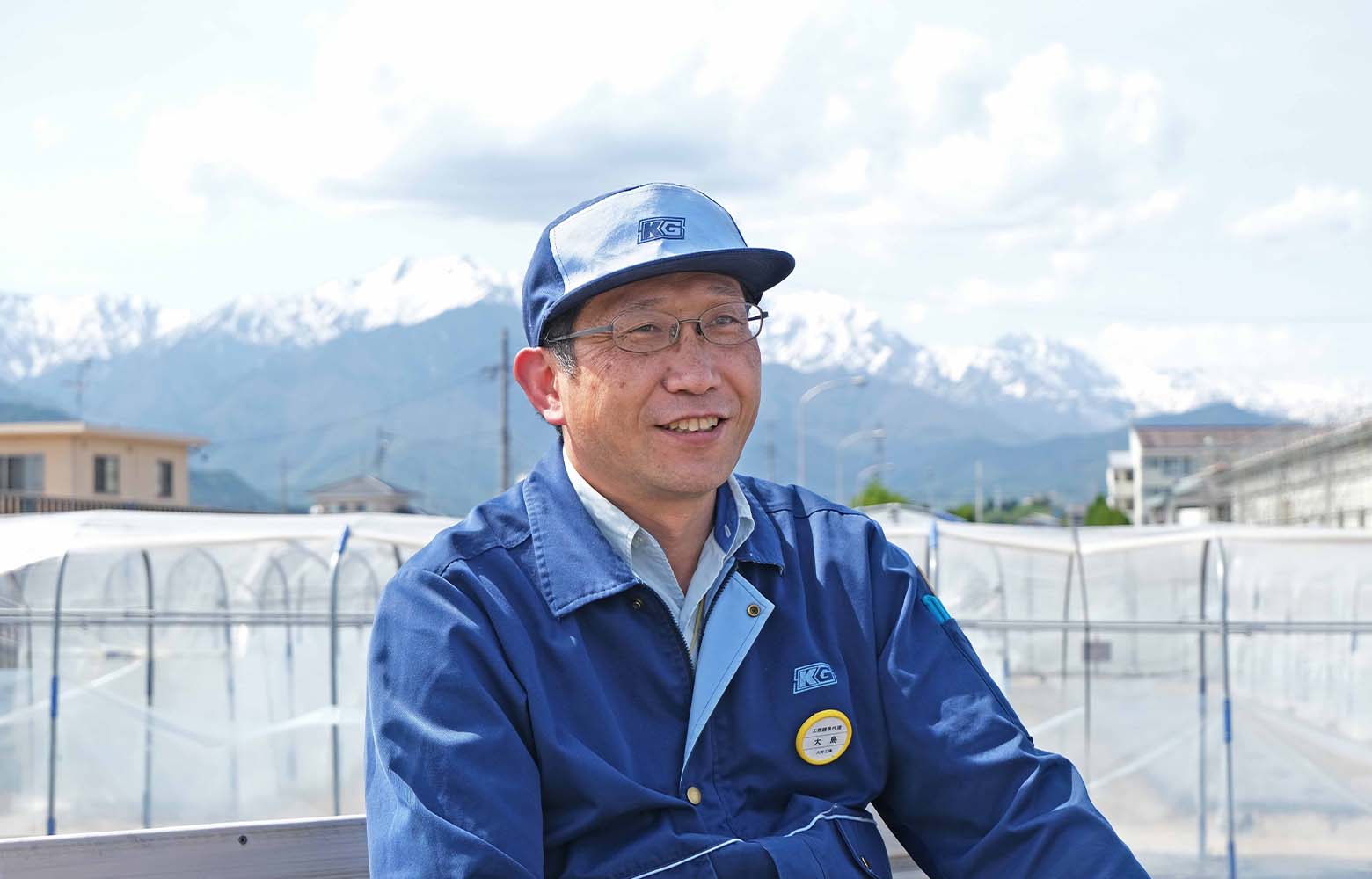
—— I am also from Nagano, and I am glad that people find "people" attractive. I felt that I would like to continue to convey the charm of Nagano Prefecture and its people.
I think there are many other really good ones besides the ones I mentioned.
—— Thank you very much for your valuable talk today.
(End)
*All photos in this interview, except for the portrait of Mr. Oshima himself, were taken by Mr. Oshima in Omachi City.
Profile
-
大島 啓Akira Oshima (Kondo Cotton Spinning Co., Ltd. Omachi Factory)
Born in Nagoya City, Aichi Prefecture. Currently works at the Omachi Plant as the Engineering Manager. His hobby is photography, which he has continued since junior high school, and he continues to capture the charms of Omachi City.
-
renment journal vol. 002
The magnificent natural beauty of Shinshu, its flora and fauna, and the lives of its people. How to enjoy Omachi City through the lens of…Date: 11.08.2021
Interviewer: Yuki Shimizu
Text: Yuki Shimizu & Shinji Kobayashi
Photo: Akira Oshima
Portrait Photograph: Shinji Kobayashi
Special Thanks: Kondo Cotton Spinning Co., Ltd. Omachi factory All Staff













